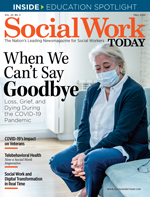|
Fear and loneliness are a duo of emotions of varying degrees. Some individuals bear these daggers practically every waking moment. Others face these demons when confronted with a certain situation. To suggest there’s an easy answer for gaining control over the situation is foolhardy. In 2020, fear and loneliness have been exacerbated by an unprecedented pandemic and too many stories of social injustice, leading to a breakdown in society that this country hasn’t experienced in quite some time. As protesters took to the streets to let their feelings be known about miscarriages of justice, many couldn’t help but be overwhelmed by the scenes being relayed across their TV screens. Some wondered, “How can I live and function in a society seemingly out of control?” Meanwhile, COVID-19 numbers show no signs of abating. As we have seen played out too many times this year, some of those with the disease are left spending their final moments away from their loved ones, shackled by the contagion’s indiscriminate power. How desperate must those inside and outside the hospital be to connect? What level of grief must the mourners be experiencing? This month’s cover story, “When We Can’t Say Goodbye” (page 14), delves expertly into death during the pandemic from all angles: the person who is dying, mourners, and communities. It’s a tough but essential read on the dynamics of a terrifying and heartbreaking existence where closure is not always possible. The authors offer advice on how social workers can ease the burden during this painful period. Elsewhere in the issue, Lauren Snedeker, DSW, LSW, LMSW, coordinator of the MSW Certificate in Aging and Health Program at Rutgers School of Social Work, examines the pandemic from an ageism perspective. As a gerontological social worker, she was taken aback by the message being sent during the early stages of the COVID-19 outbreak. Reports were that the disease affected mainly the old, leaving the rest of society to take a deep breath and continue to live their lives. The message seemed to indicate that as long as younger, healthier people were OK then this virus was more like a flu—an inconvenience. |

 Editor’s Note: Grief Compounded
Editor’s Note: Grief Compounded